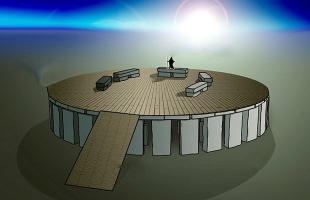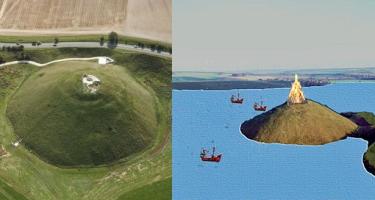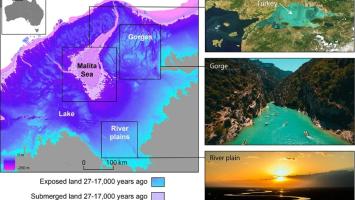Copy Link
Add to Bookmark
Report
Birmingham Telecommunications News 027

BTN: Birmingham Telecommunications News
COPYRIGHT 1990
August 1990 Volume 3, Issue 7
Table Of Contents
-----------------
Article Title Author
Policy Statement and Disclaimer................Staff
Editorial Column...............................Randy Hilliard
Terminal Roundup...............................Sid Browning
Shareware Reviews..............................Radio Active
WWIV: Part 3 of 3.............................Duck Capps
Fractint ver. 10...............................Eric Hunt
Clone Invaders.................................Dean Costello
Profile: Jet Thomas...........................Chris Mohney
Known BBS Numbers..............................Staff
-----------------------------------------------------------------------
Disclaimer and Statement of Policy for BTN
We at BTN try our best to assure the accuracy of articles and
information in our publication. We assume no responsibility for
damage due to errors, omissions, etc. The liability,if any for BTN, its
editors and writers, for damages relating to any errors or omissions,
etc., shall be limited to the cost of a one year subscription to BTN,
even if BTN, its editors or writers have been advised of the likelihood
of such damages occurring.
With the conclusion of that nasty business, we can get on with our
policy for publication and reproduction of BTN articles. We publish
monthly with a deadline of the fifteenth of the month prior to
publication. If you wish to submit an article, you may do so at any
time but bear in mind the deadline if you wish for your work to appear
in a particular issue. It is not our purpose to slander or otherwise
harm a person or reputation and we accept no responsibility for the
content of the articles prepared by our writers. Our writers own their
work and it is protected by copyright. We allow reprinting of articles
from BTN with only a few restrictions. The author may object to a
reprint, in which case he will specify in the content of his article.
Otherwise, please feel free to reproduce any article from BTN as long as
the source, BTN, is specified, and as long as the author's name and the
article's original title are retained. If you use one of our articles,
please forward a copy of your publication to:
Mark Maisel
Editor, BTN
221 Chestnut St.
BHM, AL 35210-3219
We thank you for taking the time to read our offering and we hope that
you like it. We also reserve the right to have a good time while doing
all of this and not get too serious about it.
-----------------------------------------------------------------------
N E W S F L A S H
The following boards allow BTN to be downloaded freely, that is with no
charge to any existing upload/download ratios.
The Connection LZ Birmingham Alter-Ego
Channel 8250 Bus System Joker's Castle
Crow's Nest Myth Drannor Posys BBS
If you are a sysop and you allow BTN to be downloaded freely, please let
me know via EzNet so that I can post your board as a free BTN
distributor. Thanks.
MM
-----------------------------------------------------------------------
As of July 10, 1990, Role Players Paradise, formerly run by Dungeon
Master, AKA Todd Simmons, will be joining Radio Free Troad run by Kelly
Rosato. All conferences and some of the doors will now be added to Radio
Free Troad. The number for Radio Free Troad is 979-6183. All former
users of Role Players Paradise are encouraged to call and register
themselves to continue their activities on Radio Free Troad.
-----------------------------------------------------------------------
Editorial
by Randy Hilliard
Operator Page (Control-K to cancel)............
RH: Hello Mark
MM: I need you to do me a favor.
RH: And that favor is? (he warily asked)
MM: Do the editorial for this months issue.
RH: S'matter, pix not back from the last party?
MM: Not in time which is just as well. I want to change the image
somewhat... Put in some socially significant commentary.
RH: ??????????
MM: Something supportive of the community, showing a social conscience.
RH: Urk! ...
MM: Thanks!
NO CARRIER
After very long and careful thought I finally decided that there
was something I could say within these covers to demonstrate my social
consciousness:
DON'T READ THIS RAG!!!
The Surgon General of the United States has determined that reading
BTN is hazardous to your mental health! It can cause miscelaneous
infestations, hair loss, scurvy, gum rot, pox, boils, and poverty--not
to mention loss of moral fiber.
With my bit of redeeming social commentary out of the way I will
get down to business.
Sid Browning had spent an enormous amount of time preparing an
article on various terminal programs.
Radio Active has written a shareware review covering IDCSHELL,
NARC, and SHEZ. Since all three programs make our lives a little easier
this article is well worth a look.
And you thought we forgot... Duck Capps has delivered to us his
final installment covering the world of WWIV. After finishing this
third of the series, you should ready to feel right at home next time
you call one of our WWIV boards.
For the graphics crowd we have Eric Hunt's article on FRACTINT.
This program uses mathematical equations to generate unusual (and often
beautiful) screen images with only a few keystrokes.
Our own Dean Costello graces (?) our pages again; this time with a
review of the Clone Invaders game.
And our Profile this month is on (drum roll please) (rat-a-tat-tat-
ta-tat).... Jet Thomas!
Of course, the Profile is followed by the Known BTN listing.
Oh yes. One other thing the SG warned was that some people might,
just might mind you, find BTN interesting. Go figure.
Editor's Note: A careful review of the Surgon Generals findings
revealed that the majority of the claimed damage occurs when the
reader peruses the editorial. Wonder why Randy didn't mention
that?
MM
-----------------------------------------------------------------------
Terminal Roundup
by Sid Browning
This article begins a short series on the various terminal
emulation, T.E., programs available via shareware for IBM and compatible
micro-computers. I will attempt to critique the programs and point out
a few advantages and disadvantages of each one. Keep in mind that an
advantage to one person may be a disadvantage to another person. Many
things are a matter of personal preference, and other things have more
to do with system parameters such as available memory, processing
speed etc. I will ignore certain T.E. program features. For example,
the host mode features. Some T.E. programs have very rudimentary host
modes, others have almost a full fledged BBS. If you want to run a BBS,
use BBS software. Other features are so seldom used that I will not
deal with them.
PROCOMM PLUS
Although there are some similarities, Procomm and Procomm Plus
are two separate programs from the same company, Datastorm
Technologies. There is a world of difference between the two.
Procomm is a no-frills version of an emulation program. It does the
job, but not much else. I would suggest to anyone using Procomm, to
switch. Procomm Plus has many more features, keeps the user much
better informed about what is happening, and has the same command
structure. Its very simple to switch to Procomm Plus from Procomm,
and there is context sensitive help for terminally confused users.
Procomm Plus seems to be the most popular T.E. program used now.
With a $75 registration fee, its also the most expensive. The main
advantage of this program is that it is simple to use, very straight
forward.
One of this program's advantages is that it only needs 163k of ram
to operate. Another advantage is that it is capable of emulating more
than twice as many terminal types than any other T.E. program I've run
across. Besides the normal ANSI terminal, Procomm Plus can emulate 15
other types of terminals.
A disadvantage to Procomm Plus, on my system, is that it has an
annoying habit of accessing the B: drive, for no apparent reason. It
does this at all sorts of strange times when it should not access
any drive at all, such as when I am entering a message on a BBS.
Procomm Plus lacks several features that the other T.E.
programs have, and some may consider this nitpicking. One
feature is that Procomm Plus will not store passwords in its phone
directory. Recognizing that some people may not want their passwords
electronically stored, for most people that is an advantage. A
person can easily have a different password for each BBS, without
having a perfect memory.
This program does not include a built-in z-modem, but does have
13 transfer protocols. Adding a z-modem shell is not all that
difficult, however. Some users prefer an outboard transfer protocol,
so it can be updated as new releases come out. I like the convenience
of a built-in protocol, and you can always use an external protocol if
the new protocol release is so much better that you must use it.
There exists a program on several of the Birmingham BBS's that
claims to remove the opening screen from Procomm Plus. I tried it.
After using it, you will not see the opening screen again, but this is
because the program won't run again. Maybe I set the patches wrong.
Q-MODEM
Q-Modem has the slickest presentation format. The authors, The
Forbin Project, have gone to some lengths to utilize graphics with
this T.E. program. Users can register Q-modem for only $30.
The appearance of the program itself reminds me slightly of MS
Windows. There is a line across the top of the screen with the
options, and it has pull-down windows behind those options. The
presentation of the program makes it simple to use and easy to learn.
This graphical orientation extends down to the documentation.
Instead of enclosing a simple ASCII text file, the documentation for
Q-modem is compressed into a printing package. This is nice, but the
user is unable to browse through and print only the necessary
portions. To get the documentation, you start a program, which
presents an attractive blue screen and asks you which pages you would
like to print. The default is 1 through 255. The program begins to
print the documentation, and keeps you informed of its progress,
until page 65. At this point the program hangs and the printer starts
a session of computer vomit.
Q-modem does have a few features that are worth mentioning. One
feature is that, if you have at least 240k of EMS, it will
automatically place its overlay into expanded memory. The user is
also able to choose the amount of memory Q-modem uses for such things as
the scroll-back, script variables and other buffers. Also, when the
file transfer window is called, Q-modem will display the available disk
space in the download path. Another feature is that the user can
extend the dialing timer without restarting the dial sequence. This
is great if the BBS you dial takes a little longer to connect after
answering the line. There is also a good context sensitive help
feature.
This program has a built-in phone file editor and sorter. Its
convenient to sort the directory when adding new numbers at the end of
a list, but it also takes up memory for an infrequently used function.
The phone file also has a place for notes relating to the numbers.
Q-modem's main disadvantage is that it requires 384k to
operate. While this is not the highest memory requirement among the
programs reviewed here, Q-modem doesn't offer additional features
for the extra memory. According to the documentation, the program
only needs a 304K overlay file, besides the phone directory and
configuration file, once it begins to run. These needed files barely
fit on a 360k floppy. In practice, if you take its other files
away, by swapping another disk, Q-modem begins to look for those
files, and will ask for the other disk. Of course, this would not be a
problem on a hard disk system.
Another disadvantage is that it has no built-in Z-modem
protocol. The documentation contains simple but detailed instructions
for installing this protocol externally, the only problem is that it
doesn't work according to their instructions. Q- modem has only six
built-in transfer protocols.
The auto-learn script language is easy to use, but extremely slow.
Unless the scripts are stored on a ramdisk, it isn't worth the wait.
Another inconvenience with this T.E. program was the scroll back key,
which is the curser-up key. Prodoor uses this key also to move around
the full-screen editor. Imagine my surprise the first time I tried to
move up a few lines in a message and ended up viewing a screen I had
seen a few moments earlier.
TELEMATE
Telemate has more features than the others. Most of its
functions are built-in, including the editor. The main advantage of
this T.E. program is that it will multi-task. The user can begin to
edit a message or some other task while a file is transferring, and
Telemate will interrupt once in a while with information about the file
transfer progress. This feature is a real time saver, but the
program will pause a file transfer if the user shells out to DOS.
When dialing a BBS, Telemate gives you the ability to add to or
subtract from the dial time, without restarting the dial queu. On line,
Telemate also displays the amount of time you have been logged on. I
find this to be useful information. Most BBS's display the amount
of time you have left, but there are times when they don't, such as
when entering a message on PC Board.
Hu seems to have thought of almost everything that a user would
want from a T.E. program; The user can toggle many of Telemate's
features off or on to specifically configure it. If the user doesn't
understand something, there is a context sensitive on line help
feature. Another interesting ability Telemate has is quoting from the
scroll back buffer.
Telemate also has a local support conference on "The Matrix" BBS.
The user can find plenty of help here from other users, or even the
program's author, Winfred Hu. Registration for Telemate is $40.
The transfer section contains 15 built in protocols. That window
also displays the amount of available space in the download path.
Another of Telemate's advantages is that the user can pick from
18 songs for the alarm. Why have just an obnoxious beep, when "The
Adam's Family" can inform you of a connection?
Telemate's main disadvantage is that it takes 500k of RAM to
operate (400K with the registered version). Are the extra features
worth that? That question falls to personal preference and depends on
the amount of free RAM you have to spare. My system didn't seem to
like Telemate. Twice while I had more than one window open I would
get a message that stated, "divide error," and it would spit me out
to DOS, while maintaining the carrier. This problem never happened
while I ran the program on Maisel's system, which leads me to believe
that Telemate needs to operate faster than my XT will allow.
Another problem I had with Telemate on my system, that did not
occur on Maisel's system, was screen speed. I would get each line of
information in a short burst, with a slight pause between lines. This
is not a problem, but it is annoying. Apparently this is not an
uncommon problem on slower systems, because Telemate is constantly
swapping text between its swap file and the scroll back buffer. Some
users have solved that problem by setting the scroll back buffer to 0,
but that trick did not work on my system.
Telemate's terminal emulation capabilities were a disappointment.
It can only emulate 4 types of terminals.
TELIX
Another good program is Telix, which users can register for $35.
The file transfer section of Telix is very useful. It keeps you fully
informed during a file transfer of everything. Z-modem is built in,
and Telix can automatically detect a Z-modem download, read the header,
and initiate the download.
One of the advantages of Telix is that it supports SALT, which
is a good scripting language. With SALT, Telix can look into the
dialing directory for the password for that BBS, and log on faster than
a person could type answers to log on questions. The more complex a
log on sequence is, the more valuable this becomes. Another value of
this, other than convenience, is that a user can have a password for
each board, without the bother of remembering each password. This
feature is a very worthwhile advantage of this T.E. program.
One advantage is this program is that "Channel 8250" BBS
carries an active Telix support conference that is echoed to the
program support BBS. Jeff Woods, SYSOP of the Telix support BBS, will
provide help and answer any questions from confused Telix users. While
logged onto a BBS, Telix displays the length of time you have been
connected.
The user can configure the scroll-back buffer of Telix from 1,000
to 64,000 characters. This allows the user to set this feature to
only use up as much memory as it is worth.
Like most T.E. programs, Telix has an advertising opening
screen. I understand the reason for these screens, if I was a
program developer who wrote shareware software, I would also
include an opening screen that the user will have to view. At least
the users know how to send money for the registered version. My gripe
here is that the registered version also contains this screen. I have
seen some utilities that remove this inconvenience, but have never
tried one to test it.
Another gripe I have with Telix is that when you initially call
the dialing directory, it simply asks which number you want to dial;
the user has to hit enter a second time to pull up the directory. This,
again, is one of those features that may be an advantage to some
people. The logic behind this is to streamline operations. If you are
about to dial "The Crunchy Frog" BBS, and you know it is number six in
your directory, then you don't have to look at the directory with
Telix. When I call the directory, that is what I want to see.
Telix needs 181K of free ram to operate. This isn't a lot to
ask, considering all its features. It is suggested that you set
BUFFERS=20 in your config.sys file, which will take up slightly
more RAM. All the files it needs to operate can fit on one 360k floppy
diskette. This makes Telix a good program for a two floppy system,
such as mine.
SUMMARY
Generally, all the programs mentioned here have advantages and
disadvantages. Asking which T.E. program you should use is like asking
someone what type of computer you should buy. There is no one
correct answer; it depends on what you intend to do with it. Author's
choice: if you have a system to support it, Telemate is the best
choice all around. It takes a lot of memory, but its features are
worth it; in the future, as more people have better systems, I
believe that more T.E. programs will resemble Telemate . The
second place winner is Telix, which would be the top choice if your
system will not support Telemate. Q-modem is a close runner up, but its
features just aren't worth the amount of memory it uses. This is
especially true when considering other programs can match its
advantages, and use less memory.
-----------------------------------------------------------------------
Shareware Reviews
by Henry Barfoot
IDCSHELL:DOS/ZIP "shell" Stand alone ZIP utility
(IDC40.ZIP 133,980);IDC40.ZIP also contains NARC.* files
04-27-90
Purpose:DOS command menu and ZIPfile processor/menu
System requirements: DOS 2.00 or above
Floppy or hard drive
CGA/EGA/VGA or Mono monitor
Features:
On-line help File Finding
Edit files with your editor Change file attributes
Multiple menus ANSI file view
Printer commands (Epson *) EGA/VGA 43 or 50 line modes toggle
Make/Remove directories Extensive ZIPfile handling
Change/Log a new drive Tag files for batch processing
Mouse support Builds/creates ZIPfiles
Move files from one dir to another Zipfile preview
Run highlighted program NARC(unZIP/archive program)
Directory tree (graphic)
*can be changed to any with config program supplied with registered
version.
There is good documentation with IDCSHELL explaining this but,
Infinity Design Concepts Inc. and PKWARE Inc. collaborated in
designing a new (02-14-89) file format called ZIP. IDCSHELL and NARC
are compatible with this (ZIP) format. IDCSHELL ver 4.0 and NARC ver
4.0 are compatible with PKZIP/PKUNZIP ver. 1.10.
A "shell" program (DOS in this case) is written to make commands
easier to execute, or, more user friendly. IDCSHELL is a powerful
program with all the standard features of a DOS shell such as "copy,
rename, change directory" plus much more. The extensive ZIPfile
processing features, including calling NARC (a compressed/uncompress
file handling utility) from the menu are what sets this shell apart
from the many other shells out there.
The ZIPfile PREVIEW command opens a screen for tagging files (from
any directory) to be added or moved to a new ZIPfile. Or updating or
freshening an existing ZIPfile. You can move back and forth through
different directories tagging and/or untagging files until you have
all the files wanted in the finished ZIPfile tagged before executing
the ZIP command. Then when you do give the program the go ahead, it
searches out all the tagged files and processes them according to your
selection (update, freshen, move, add). The learning curve for
archiving and unarchiving ZIP files is greatly reduced with the help
of these two (IDCSHELL and NARC) programs. And ease of handling ZIP
files with these programs will be appreciated by the beginner or
advanced user. Though the compression process did seem excessively
slow on the files I tested in both the fast speed and most compression
modes.
******
NARC ver. 4.0:(found in IDC40.ZIP) (04-27-90)
from, Infinity Design Concepts, Inc.
Purpose:Stand alone de-archive utility
System requirements:
CGA, EGA, VGA, or MONO graphics
Floppy or Hard drive
Requires about 220k of RAM
Features:
Random access to ZIPfiles Change Directories/Drives
(FULL Function file viewing) Menu driven de-arcing
View DOC files without extracting Scroll through files inside a
View binary files in HEX format ZIPfile
Print files without extracting Supports ZIP(1.10), ARC and ARK
Mouse support NETWORK compatible
Supports password decryption
NARC is a stand alone, menu driven, de-archive program that allows
you to easily move from archive to archive (ZIP, ARC, ARK) with the
options of extracting, viewing or printing sub-files within an
archive. Since all the decompression routines are built into NARC
there is no need to have PKXARC, PKUNZIP or PKPAK in its path. The
full functional viewing capabilities are built in too, so there is no
need for a separate "viewing" utility. PGUP, PGDN and arrow keys are
supported for scrolling through sub-files and directories. NARC
together with the IDCSHELL program round out your archive/de-archive
needs in one complete ZIP/ARC/ARK package. This package (IDC40.ZIP)
would also be an excellent choice for someone new to archived files or
new to archiving files since everything you need to get started is
contained in these files.
******
SHEZ:Archive shell
SHEZ55.ZIP .....114,944 05-15-90
Purpose:Make handling archived files easier/user friendly.
System Requirements:Hard drive strongly recommended
but no requirements were given.
Features:
Directory (selectable) menu SCAN sub-files for viruses
View sub-files inside archive Test archive integrity
Convert from/to many formats Create new archived files
Handles ZIP, ZOO, ARC, PAK, LZH Freshen existing archives
Execute dos commands Update existing archives
Run .EXE / .COM sub-files Pull down menus and help
Mouse support screens
Extract 1 file, a group of files or entire archive
Set extraction path once or every time
Save directory information when creating a new ZIP file
Shez is an archive shell that handles most of the popular archive
formats including: ZIP, ARC, PAK, LZH and ZOO. You have the choice of
using any of these archive programs that you currently have installed
when archiving/unarcing a file. To unarchive a file, all you need to
do is, select the file to process from the directory list shown (or
change to list another directory) and tell SHEZ where you want the
extracted files to be put. SHEZ will determine the type file it is
(ZOO,ZIP,LZH, etc.) and use that program to process it. This is a
hassle free solution to learning all the commands associated with the
different archiving programs. And would be great for a person
beginning, or not familiar with archived files, because there are help
menus all throughout SHEZ. In addition, SHEZ will use V. Buerg's
LIST.COM for viewing of individual files inside an archive without
having to unarchive the file. It sets up a temporary directory for
this and clears the directory when you finish a file and/or exit SHEZ.
You may run an .EXE or .COM file from inside an archive without
unarcing the compressed file. This works on most files because SHEZ
will swap 90% or as much as possible of itself out of RAM to either
EMS memory or your hard drive. SHEZ55 has mouse support. SHEZ works
like a DOS shell in that you may copy, move, delete, or rename files
from the SHEZ menu. You can update archived files time and date to
that of the newest file in the archive file. Convert archived files
from one format to another (.ZIP to LHZ etc..) And finally, you can
configure SHEZ to use SCAN.EXE (ver. 39 or greater) to scan for viruses
inside compressed files. This is my choice for archive applications,
it's simple to use and you don't lose any speed or compression from
the original archivers. The only difference in SHEZ and the original
compression programs by themselves is, with SHEZ you are gaining a menu
the individual archivers/de-arcers left out.
-----------------------------------------------------------------------
WWIV: Part 3 of 3
by Duck the Everpresent
Co-Sysop of The Cathouse BBS
Since this is my last article on the workings of the WWIV, I saved
the best for last, online games. When most people log onto a BBS, they
are looking for one of 3 things: files, message bases, or online games.
With WWIV, you can use any kind of online game, even those for PC-Board
and Pheonix systems. A little modification and the addition of a batch
file, and the BBS is ready to run your game. Accessing the games section
is as easy as the pressing of the "." key. Some games can't be entered
without a ANSI terminal, or the right security level. All of this is
determined by the sysop. Online games on any system are usually dictated
by the tastes of it's users, so, if a system doesn't have a game you
like, make a request.
And, finally, the best thing that a WWIV has in it's setup, it's
easy to use network software. When Wayne Bell concieved of the WWIV
Bulletin Board System, he saw a national chain of BBS's linked together
sharing views on a wide range of topics, which has evolved into the WWIV
system of today. To get on the net, all you have to do is call your WWIV
AC (area coordinator), and convince him you have a board with enough
variety of users and regularity to join the net. I am Co-Sysop of the
Alabama AC board, the Cathouse, as well as a node BBS, The Electric
Reqium, so I can see both points of view.
After the AC is convinced, then he must send mail asking for that
node to be admitted to the net. In about two weeks, confirmation is
recieved and you have to pick the subs (conferences) you wish to receive
and send mail to each appropriate sub-coordinator. After this second
confirmation is received, you are ready to begin getting the net mail
from all the boards across the country whose subs you wish to carry.
The topics that come in on the Net are diverse, like music, video,
gaming, IBM info, and the WWIV mod net, just to name a few. There is
even a sub to argue about which brand of computer is best (My Computer
Rips All!!). In all, over 300 subs can be chosen from to add to the
depth of your WWIV BBS.
In just a few short years, WWIV has grown and multiplied into one
of the most popular BBS's around. It is an easy to use BBS with a
national net supporting it. It's intro to Birmingham in 1988 has spurned
over 10 WWIV's in our area, and growing each day. Thanks for your time,
and I hope you learned something new about the WWIV BBS system...
Hasta.. for now..
WWIV Bulletin Board System is Copyrighted by Wayne Bell 1987, 1990
-----------------------------------------------------------------------
Fractint ver. 10.0
a review by: Eric Hunt
A breathtaking mountain view. Pop Art. Wondrous colors. Startling
shapes. What do these terms bring to mind? A fractal? What, you ask, is
a fractal? Look at a tree. Observe its trunk, it branches and the twigs.
A tree is a fractal. When the same unit is repeated at different sizes,
textures and shapes throughout an object, you have a fractal. A twig is
similiar to a branch on a smaller scale, just as a branch is similiar to
a trunk. Fractals were first seriously investigated by Benoit B.
Mandelbrot M. in the mid 1970's. He coined the word fractal from the
Latin FRACTUS - "to break." Powerful supercomputers and complex
mathematics were used to obtain his first crude printed images. Now you
can discover that same sense of awe and wonder in your own home, thanks
to Fractint.
Fractint is a fractal generator for IBM compatible computers. The
latest release of the program encompases more than 30 fractal types and
is compatible with 16 different graphics adapters, including plain CGA
and Hercules.
Because fractals involve ENORMOUS amounts of mathematical
computations, most fractal programs take hours, even days to complete an
image. Not so with Fractint. The programmers behind Fractint have
circumvented the speed problem by changing the method by which their
fractals are generated. Most fractal programs use Floating Point Math
(Decimal Math.) This math is EXTREMELY slow on a PC and really REQUIRES
a FPU coprocessor. (An 8087 or 80287, etc. chip) With the advent of the
32 bit 80386 processor, it can be emulated with MUCH faster integer math.
This is how Fractint produces over half of its fractals. The 80386
specific math can even be emulated on non-386 processors by Fractint,
making fractal generation fairly speedy on even the lesser processors.
Once you run the program, an extensive on-line help system is
available to you by pressing the 'h' or '?' keys. I made EXTENSIVE use
of this when I generated my first few fractals.
The initial fractal I generated was the simple Mandelbrot set, or
Mandelbrot "universe." But first, I had to find out what keypress I
needed to use that would start my fractal generating. The help system
lists 5 or 6 screens of keypresses that correspond to different video
modes and adapters. I found the keypress that would activate my Paradise
VGA 1024 card in 640x400x256 resolution and pressed it. WOW! The
Mandelbrot set appeared in about 30 seconds! I was impressed! Once I was
through admiring th iful image, I found through the help screens that
's' was used to save my fractal to disk in GIF format with the filename
"Fract001.fra." I saved my first image and then wondered: "What next?"
Well, I also read the manual (!) and found that there was a command line
switch (Warn=Yes) that will prevent Fractint from automatically saving
an image under Fract001.fra. It looks for the next available filename
and saves it there. For example, if Fract001.fra and Fract002.fra
existed, the program would save the next fractal under Fract003.fra.
The next thing I did was to try color-cycling. I had seen color
cycling before on an Apple IIe, but I was not prepared for this! (Note:
Only EGA and VGA adapters are capable of Color-Cycling) When an image
appears on the screen, press 'c.' The overscan area of the sreen turns
white, indicating color-cycling mode. Next, press the spacebar. I cannot
say what impressed me more, the image itself, or the color-cycling! It
was BEAUTIFUL! If you liked the original colors better, they can be
restored with t key while in color-cycling mode. To change and image to
b/w, press 'a' while in CC mode. (I press 'a' for my Julia sets - more
on that later in the article) For a really neat effect, press 'enter'
while in CC mode. This randomly selects a color palette and animates it.
There are also 30 predefined color palettes found by pressing the
SFTF1-F10 keys, the CTLF1-F10 keys and the ALTF1-F10 keys. After playing
for a while, I found a color combination that I really liked - so I
saved the fractal w ith that color c ombination by pressing 'esc' to
leave CC mode and then pressed 's' to save the image.
Once I created my initial Mandelbrot image, I wondered... "that
place right.....THERE! looks to be interesting. I wonder if I could blow
that little section up?" Well, I could. Fractint enables you to zoom in
on little sections of an image and BLOW it up full screen. This is where
the fun and beauty of the Mandelbrot set begins. To activate the zoom
box, press the "PgUp" key. A big dotted box appears. Each time you hit
the "PgUp" key, the box gets a little smaller. Once I found the box size
that I l moved the entire box around the screen with the direction keys.
That was too slow for me, so hitting CRL-dir. keys enabled me to move
the box around in ten pixel increments and hitting the plain direction
keys enabled me to position the box exactly where I wanted it. When I
arrived at the spot, I pressed 'enter' to blow the selected image up
full screen in the current video mode. Using the 'Zoom and Pan' (as it
is called by Fractint,) I played around in the Mandelbrot set for hours
and generated m ore than 1 meg of pictures to keep for posterity. A big
NOTE is that you do not have to wait for a screen to finish generating,
you can press the zoom key whenever you see an interesting area that you
would like to zoom in on. This feature saves a lot of time!
The last thing that I will cover this month are Julia sets.
Mathematically speaking, there is only one Mandelbrot set, but there are
an infinite number of Julia sets. Guess what? Each point on the
Mandelbrot corresponds mathematically to an entirely different Julia
set! To exploit this interesting feature, press the 'spacebar' whenever
you have a Mandelbrot image on the screen. The corresponding Julia set
is then generated and you can zoom and pan around in it just like the
Mandelbrot set! Now you'l for DAYS playing with BOTH sets!
Next month I will detail some of the more advanced functions of
Fractint, including the other fractal types, 3-D transformation, and
others.
STAY TUNED!
-----------------------------------------------------------------------
Clone Invaders
by Dean Costello
"Clone Invaders" is an intriguing little game combining advanced
IBM graphics with the detail, color, and sound that we all appreciate
from coin-fed video games from 1975.
If you have ever played "Space Invaders", you have hit on the basic
premise of this intriguing little program. It plays just like the Atari
2600 version. You have a smallish fire castle from which you shoot at 5
rows of evil approaching invaders from space. Your job at this lonely
outpost is to kill all of the evil invaders before they touch down and
kill you, your wife and kids, your dog, and the rest of your species.
It's not all bad, however. You do get 4 blocking things behind
which you can hide for a bit and catch your breathe. And you do get
some devastating firepower from your fire castle, in that each shot has
the ability to destroy one of the oncoming evil invaders.
When you destroy the ENTIRE screen of evil invaders, you think you
are done? Not hardly. You then begin a SECOND wave of evil invaders.
And if you think that is all, again not hardly, since quickly thereafter
a THIRD, than a FOURTH, FIFTH, SIXTH, and even a SEVENTH! In fact,
there doesn't seem to be any end to the evil invaders.
During play, the sound can be turned off or on using the 'S' key.
The game can be aborted with the 'ESC' key. The space bar is your fire
key and the arrows on the numeric pad move your base. And if that's not
all, you can even use a MOUSE! Either mouse button will act as the fire
key. You can then move the fire castle back and forth by moving the
mouse back and forth, also.
The bottom two rows of evil invaders count for 10 points each. The
middle two rows count for 20 points each, and the top row counts for 30
points. There is also, at odd intervals, a spaceship that zips across
the top of the screen. If you are lucky or skillful enough to hit the
spaceship, you get anywhere between 100 and 300 points for your
erstwhile effort.
Also, if you think that the action is too slow for you, you can
change the speed of the game at the command line. What you do is type
CLONINV xxx, where 'x' is a number. The larger the number the slower
the game will play.
All told, this is again a very impressive use of advanced IBM
graphics and sound (Did I mention sound? The sound is just a good as
the Atari 2600 version!). A very good way to show off your expensive
computer to people that won't know any better.
Oh yes, this incredible program was written by Gary Quirling. And
he asks that you send him $20 for his masterpiece.
Ed. note: This game will run in CGA, EGA, or VGA mode. MM
-----------------------------------------------------------------------
ProFile
by Chris Mohney
The ProFile is a short, half-serious biographical sketch given to
various computer telecommunications personalities around Birmingham.
Victims are selected randomly from a group of names put into the
notorious Hat. Anyone who thinks himself brave or witty enough may
petition for admittance to the Hat by leaving E-Mail to me (Chris
Mohney, most boards around town) to that effect. Anyone who wishes to
suggest more questions or sneakily nominate someone without their
knowledge may take the same route....
---------
Pro File on Jet Thomas
---------
Age: That awkward age: Old enough to know better but not at all tired.
Birthplace: Charlottesville, VA
Occupation: pending
My hobbies include: caving, computers, evolutionary systems, Forth,
music composition, social psychology
Years telecomputing: I don't know. 5?
Sysop, past/present/future of: None yet. No present plans.
My oddest habit is: I don't have any odd habits. Maybe my evenest habit
is getting my sideburns the same length.
My greatest unfulfilled ambition is: to raise a family.
The single accomplishment of which I am most proud is:
Keeping an important secret. I don't want to be any more explicit
about this.
My favorite performers are: RA Fisher, RA Lafferty, Chuck Moore
The last good movie I saw was: Sex, Lies & Videotape? I don't watch
many movies.
The last good book I read was: EXPLOITING CONTINUITY by Henri Theil &
Denzil Fiebig
If they were making a movie of my life, I'd like to see my part played by:
I don't know many actors. Dustin Hoffman does a good job, but he's
probably too old now.
My pet peeves are: "Business ethics." EST-Forum graduates. ACOA's.
People who lie to be polite.
When nobody's looking, I like to: stretch.
-----------------------------------------------------------------------
Known BBS Numbers For The Birmingham Area
NAME NUMBER BAUD RATES MODEM BBS SOFTWARE
SUPPORTED TYPE
* Alter-Ego BBS 925-0707 300-2400 ProBBS/ProDoor
* American BBS 674-1851 300-2400 PC Board 14.5
* Bus System BBS 595-1627 300-2400 PC Board 14.2
* Byte Me! 979-BYTE 9600 HST WWIV 4.07
Camelot BBS 856-0679 300-2400 Teleguard 2.5
^ Cat House 941-1879 300-9600 V.32 WWIV 4.11
-* Channel 8250 Node 1 744-8546 300-9600 HST/V.32 PC Board 14.5
-* Channel 8250 Node 2 744-5166 300-9600 HST PC Board 14.5
* Crunchy Frog 956-1755 300-2400 PC Board 14.0
D3 Systems BBS 663-2759 300-9600 HST/V.32 Quick BBS 2.04
+ Duck Pond BBS 822-0956 300-9600 HST/V.32 Opus-CBCS 1.03c
^ Eazy's Playhouse 870-0434 1200-4800 MNP4 WWIV 4.11
Electric Reqium 680-9753 1200-2400 WWIV 4.11
Emerald Castle 871-6510 300-2400 Image 1.2
EzNet Central 785-7417 1200-9600 HST PC Board 14.2
Hacker's Corner 674-5449 300-2400 MNP4 PC Board 14.5
+ I.S.A. BBS 995-6590 300-9600 HST TCOMM
* Joker's Castle 744-6120 300-2400 PC Board 14.0
^* Lands Of Brittania 791-0421 1200-2400 WWIV 4.11
* Little Kingdom Node 1 823-9175 300-9600 HST/V.32 PC Board 14.5
* Little Kingdom Node 2 823-9192 300-2400 MNP4 PC Board 14.5
LZ Birmingham 870-7770 300-2400 PC Board 14.5
* Magnolia BBS 854-6407 300-9600 HST PC Board 14.2
Missing Link 853-1257 300-2400 Image 1.2
Pirate's Cove 942-7429 300-1200 Image 1.2
Posys BBS 854-5131 1200-2400 RBBS CPC17.3
* Radio Free Troad 979-6183 300-9600 HST PC Board 14.?
Safe Harbor 665-4355 300-2400 GT Power 15.00
Shadetree BBS 787-6723 300-2400 Phoenix 1.36
Sperry BBS 853-6144 300-9600 Hayes PC Board 14.5
* ST BBS 836-9311 300-2400 PC Board 14.2
The Commodore Zone 856-3783 300-2400 Image 1.2
The Connection 854-9074 1200-2400 PC Board 14.1
The Dog House 425-9255 300-1200 Image 1.2
The Islands BBS 870-7776 300-2400 PC Board 14.0
The Kingdom Of Teletech 674-0852 300-2400 WWIV 4.11
- The Matrix Nodes 1-4 323-2016 300-2400 PC Board 14.5
- The Matrix Node 5 251-2344 300-9600 HST PC Board 14.5
VCM(ee) BBS Node 1 655-4059 300-2400 Oracomm Plus
VCM(ee) BBS Node 2 655-4065 300-1200 Oracomm Plus
Willie's DYM Node 1 979-1629 300-2400 Oracomm Plus
Willie's DYM Node 2 979-7739 300-2400 Oracomm Plus
Willie's DYM Node 3 979-7743 300-1200 Oracomm Plus
Willie's DYM Node 4 979-8156 300-1200 Oracomm Plus
Boards with a "*" before their name are members of our local network,
EzNet, and public messages left in the EzNet Conferences of any of these
boards will be echoed to all members.
Boards with a "+" before their name are members of FidoNet, an
international network that provides a variety of public forums as well
as private mail services all over the world.
Boards with a "-" before their name are members of MetroNet, an
international network that provides a variety of public forums as well
as private mail services all over the world.
Boards with a "^" before their name are members of WWIV-Net, an
international network that provides a variety of public forums as well
as private mail services all over the world.
If you have any corrections, additions, deletions, etc., please let us
know via EzNet.
-----------------------------------------------------------------------
EzNet Multiple Echo List
EzNet now supports multiple conference echoing but there are a few
things you should be aware of regarding private mail.
A. You have one 'address' for private mail. If you are registered for
private mail on Channel 8250 and someone sends you a private
message in the MS-DOS conference from Crunchy Frog it will wind
up in the Hardware conference on Channel 8250 as it should.
However, if you were registered for private mail on Magnolia and
someone sends you a private message in a conference that Magnolia
does not support (echo) then the message will wind up in the
twilight zone.
B. If you go by a handle on one BBS and your real name on another even
if the private message goes where it is supposed to, you will not
be able to read it because it is addressed to someone else as far
as PC Board is concerned. PC Board has no way of knowing that Red
Foxx and John Doe are the same person. No tickee, no washee.
Advice on sending private mail: If you don't know if the person you
are sending private mail to is registered for private mail then keep a
copy of the message in case you have to find an alternate route. EzNet
Central will delete your private, undelivered message and inform you
that the user you attempted to reach is not registered for private mail
on any EzNet Node.
This is a list of the current echoes that I am aware of. More are
in the making and will be posted in future issues. If you are a sysop
and are running an echo not listed for your board, please make us aware
of it so we may correct it next issue.
Eznet Program IBM Adult Scitech BTNWA
Alter-Ego ........... * ..... ..... ..... ..... ..... ..
American BBS ........ * ..... ..... ..... ..... ..... ..
Bus System BBS ...... * ..... * ..... * ..... ..... * ..... * ..
Byte Me! ............ * ..... * ..... * ..... * ..... ..... ..
Channel 8250 ........ * ..... * ..... * ..... ..... * ..... ..
Crunchy Frog ........ * ..... ..... * ..... * ..... ..... * ..
Joker's Castle ...... * ..... ..... * ..... * ..... ..... ..
Lands Of Brittania .. * ..... * ..... * ..... ..... ..... ..
Little Kingdom ...... * ..... * ..... * ..... * ..... * ..... ..
Magnolia BBS ........ * ..... ..... ..... ..... ..... ..
Radio Free Troad .... * ..... ..... ..... ..... ..... ..
ST BBS .............. * ..... ..... ..... * ..... ..... ..






















